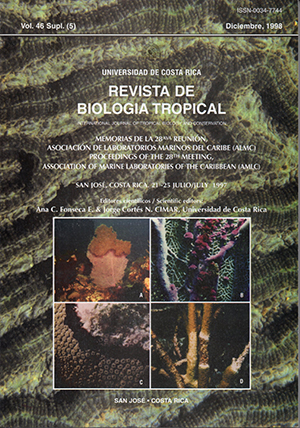Abstract
Since the appearance of the green mussel, Perna viridis, in Ihe Golfo de Paria in 1993, the habitat of the brown mussel, Perna perna, has been altered. P. viridis is driving out the P. perna mussel from its natural beds in La Esmeralda, Guatapanare and El Morro de Chacopata, Sucre State, and at the end of 1995 it appeared in Isla Margarita, Nueva Esparta State, Venezuela. For that reason, a study has been carried out to determine whether P. viridis from La Esmeralda has a higher tolerance and adaptability than P. perna, in terrns of salinity and temperature. Low and high lethal temperatures were 6°C and 37.5°C for P. viridis and 3°C and 34.5"C for P. pema. Low and high lethal salinities were 0 and 64 0/00 for P. viridis and 8 and 54 0/00 for P. perna, respectively, indicating that the green mussel has wider thermohaline tolerance limits than the brown mussel. This may explain why P. perna has been displaced by P. viridis in less than three years.##plugins.facebook.comentarios##

This work is licensed under a Creative Commons Attribution 4.0 International License.
Copyright (c) 1998 Revista de Biología Tropical
Downloads
Download data is not yet available.


